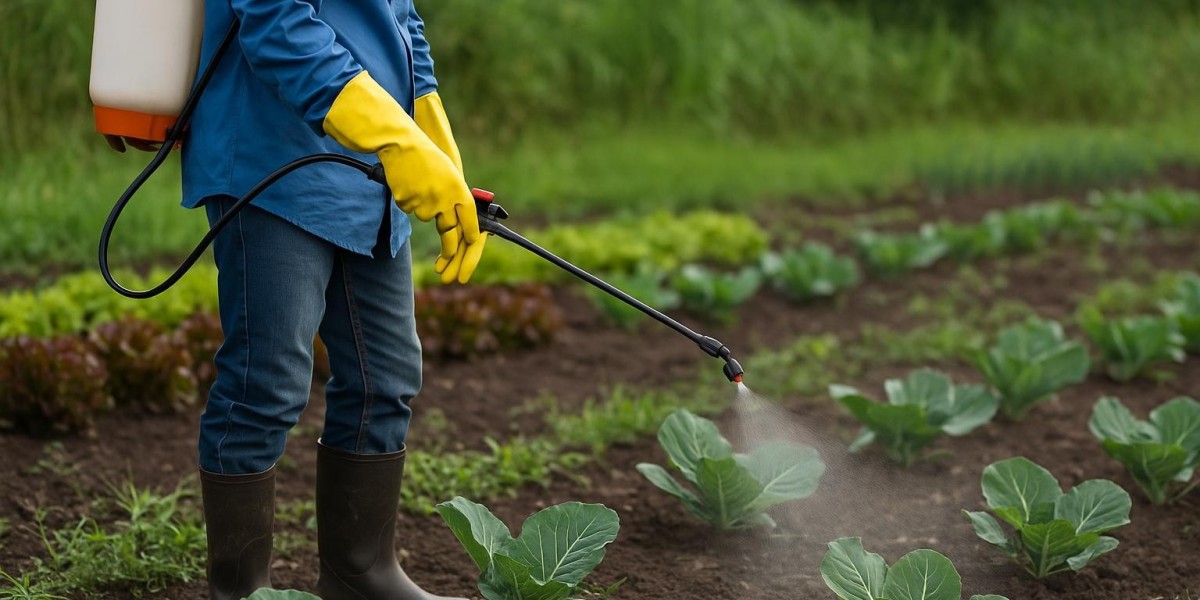What Makes WG Formulations Unique in Agriculture?
Wettable granule (WG) formulations differ from emulsifiable concentrates (ECs) or suspension concentrates (SCs) due to their stability and water dispersibility. When used in agriculture, WGs:
- Improve operator safety by reducing volatile emissions
- Allow for controlled dispersion, reducing phytotoxicity risks
Unlike liquid formulations, WGs reduce spillage and environmental runoff, particularly when used near water bodies or during monsoon periods.
Overview of the Active Ingredients: Imidacloprid and Fipronil
Fipronil is a phenylpyrazole that blocks GABA-regulated chloride channels, overexciting the nervous system and killing insects. It is effective against certain soil pests and leaf feeders.
Imidacloprid is a neonicotinoid that targets nicotinic acetylcholine receptors to disrupt synaptic transmission. It is most effective against aphids, leafhoppers, and whiteflies.
This combination offers better pest knockdown because of their complementary action mechanisms, which affect both root-feeding and canopy-feeding insects.
Why Accurate Field Application Matters
Resistance may develop as a result of sublethal exposure from an inappropriate mixture, dosage, or timing. It may also harm beneficial insects or lead to ineffective pest control.
To achieve equal distribution and systemic absorption, WG formulations must be blended appropriately and applied under specific conditions. Precise field procedures are therefore essential.
When and How to Apply: Timing and Techniques
Crop type, growth stage, and pest pressure all affect application. To combat stem borers and leaf folders, for instance, it is best to apply it to rice during early tillering; however, it works better on vegetables before to flowering.
Key timing tips:
- Avoid spraying during the hottest part of the day
- Target early mornings or late afternoons to reduce evaporation
In field conditions, farmers must calibrate their knapsack sprayers to ensure even coverage. Use 500–600 liters of water per hectare for foliar application.
Equipment Checklist Before Application
- Check spray nozzles for uniform output
- Ensure tank agitation system is functional
- Wear protective gear, including gloves and masks
According to the National Institute of Plant Health Management (NIPHM), improper calibration contributes to 35% of pesticide wastage annually. Therefore, machine maintenance has a direct impact on effectiveness.
Recommended Dosage and Mixing Procedure
The standard dosage for Fipronil + Imidacloprid WG is 80–100 g per acre, depending on the target pest and crop. Mix the formulation in a small quantity of water first to create a paste, then dilute in the main tank.
Ensure water pH is between 5.5 and 5.5–6.5 for maximum chemical stability. Avoid using hard or alkaline water, as it can reduce solubility and increase pest impact.
To access the correct formulation and ensure authentic sourcing, many farmers now prefer to buy Fipronil 40% + Imidacloprid 40% WG products from trusted online agro-retailers that supply certified products for crop-specific needs.
Optimal Crops and Pest Spectrum
This combination is widely applicable across various crops. Its dual efficacy makes it ideal for diversified cropping systems.
Crop | Target Pests | Application Stage |
Sugarcane | Early shoot borer, white grub | 30–45 DAP (drenching) |
Rice | Stem borer, leaf folder | Tillering (foliar spray) |
Maize | Rootworm, jassids | 15–25 DAP (soil drench) |
Brinjal | Whiteflies, aphids | Pre-flowering |
Cotton | Thrips, mealybugs | Vegetative stage |
As per a recent field report from the Punjab Agricultural University, brinjal plots treated with this formulation recorded 38% fewer aphids and improved fruit quality scores over three harvests.
Environmental Safety and Drift Management
Applications near pollinator zones or bodies of water must be carefully controlled. Particularly, fipronil is harmful to aquatic life. If imidacloprid is used during flowering, pollinators are at serious risk.
Strategies for reducing risk:
- Establish buffer zones of 10–20 meters around water bodies
- Spray during non-blooming periods
- Use anti-drift nozzles to limit spray travel
Advanced nozzle types such as flat-fan or air-induction nozzles can reduce pesticide drift by up to 75%, according to studies from Agri-Tech America.
Compatibility With Other Products
Farmers often need to combine insecticides with fungicides or micronutrients to achieve optimal results. However, physical and chemical compatibility must be checked before tank mixing.
Compatibility tips:
- Avoid mixing with alkaline substances like copper-based fungicides
- Conduct a jar test before full-scale spraying
- Use within 6 hours after preparation to avoid degradation
Compatibility matrices from reliable agricultural extension services, like the University of California IPM, can occasionally be used to confirm safe pairings.
"Precision in pesticide use isn’t about using more—it’s about using it right. Efficiency and timing beat quantity every single time."
Preventing Resistance Development
Repeated exposure of pests to the same chemical group increases resistance potential. This formulation, though dual-acting, must still be used judiciously.
Best practices:
- Rotate with insecticides from other MoA groups like diamides or spinosyns
- Follow ETL (economic threshold level)-based applications, not calendar schedules.
- Avoid half-dosage or sublethal exposure
According to field monitoring, Bemisia tabaci populations in Gujarat vegetable farms exhibited a 44% lower resistance frequency in locations with stringent rotation techniques.
Storage and Handling Guidelines
WG formulations are more stable than ECs but still require proper storage.
- Store in a cool, dry place, away from sunlight and moisture
- Use within 24 months of manufacturing
- Keep the packaging sealed to prevent hygroscopic clumping
Improper storage can lead to caking or hardening, making dispersion in water ineffective. Repeated exposure to humid environments can compromise the granule integrity.
Common Application Mistakes to Avoid
- Improper mixing: Always premix to ensure dispersion
- Incorrect timing: Never apply during full bloom or high UV hours
- Spray overlap: Leads to phytotoxicity and excessive chemical use
Farmers should also avoid blanket sprays. Instead, target hot spots identified via field scouting. This minimises cost, chemical load, and non-target effects.
FAQs
- Is Fipronil + Imidacloprid safe for all crops?
Yes, when applied according to the label guidelines. Always refer to recommended crops and avoid using them off-label. - How soon can I re-enter the field after spraying?
Generally, after 24 hours. Always follow REI (re-entry intervals) specified on the product label. - Can I spray this mix during rain?
No. Rain within 6 hours of spraying can wash off the active ingredients and reduce efficacy. - How many sprays are allowed per season?
Maximum 2–3 sprays per crop cycle, depending on pest infestation levels and crop duration. - Is it safe for livestock or poultry near the field?
Yes, if not exposed directly. Prevent grazing in treated fields for 7 days post-application.
Practical Tips From the Field
Experienced farmers often place perimeter trap rows of untreated plants to detect the movement of pests. This allows for early identification and timely spraying just when needed.
Imidacloprid and fipronil are sometimes used in separate dosages to achieve staggered pest emergence. By doing this, long-term protection is ensured and early pest adaptation is prevented.
The utilisation of spray drift applications and weather-check platforms has further improved precision. Tools like Syngenta's Spray Assist, which take into account wind speed and humidity, are used to schedule the ideal time for spraying.
Application Record-Keeping
Maintaining detailed spray logs helps ensure regulatory compliance and track resistance.
Include the following:
- Date and time of spraying
- Dosage used and area covered
- Weather conditions
- Pest population level
This data becomes crucial for analysis if resistance, phytotoxicity, or yield impacts occur.
Concluding Remarks: Establishing Sustainable Methods
As agriculture transitions to sustainable intensification, chemical-only pest management is no longer an option. However, drugs like Fipronil + Imidacloprid WG provide a good balance by combining a rapid action with long-lasting persistence. When properly used, they are quite effective without endangering the environment.
By applying safety, compatibility, timing, and resistance awareness to their field activities, farmers may improve crop protection and extend product life.
Crop security today requires a blend of history, innovation, and responsibility. Formulations are only as good as their application, and what matters most is the farmer's understanding.



